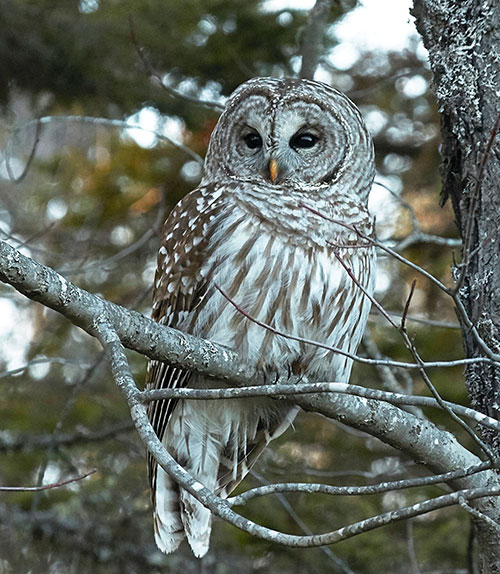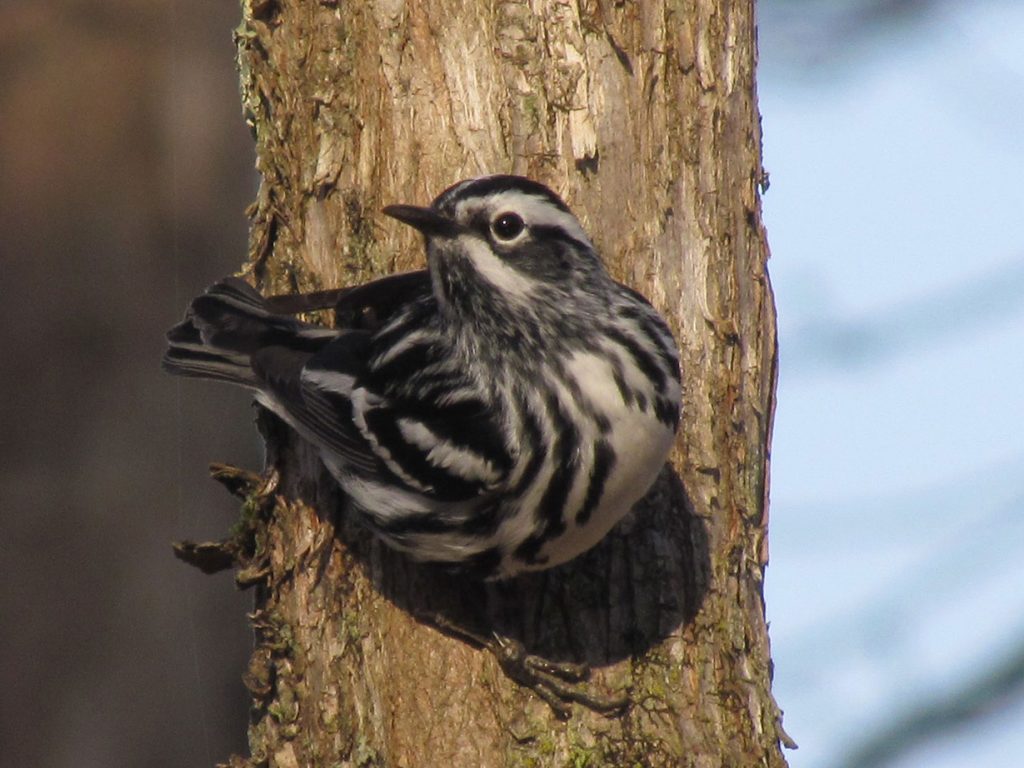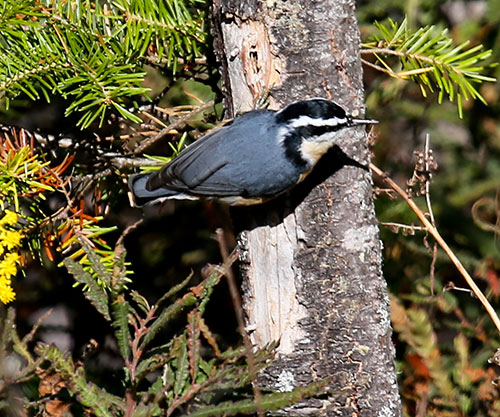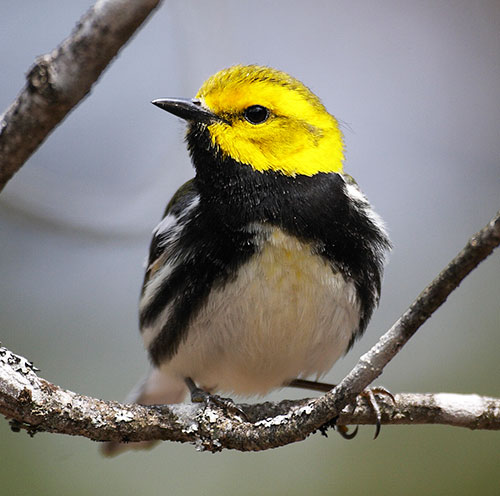
Barred Owl by Pam Wells
We know you know that forests are incredibly important for birds. You learned in school (we hope!) that they provide homes for birds, and provide the food they need to raise young and for successful travels to and from their breeding and wintering grounds. If you’ve hiked in a forest, or paddled a stream or river through one, or enjoy a forest patch on your property, you’ve seen and heard birds thriving in their forested element.
But do you know just how important forests are for our feathered songsters?
Consider common birds like the Black-capped Chickadee, White- and Red-breasted Nuthatches, and just about every woodpecker species that visit our backyard bird feeders. Even feeding stations surrounded by lawns and gardens would be pretty quiet without forest nearby. Birds we see perched in trees along fields and roadsides—everything from Barred Owls and Red-tailed Hawks to Eastern Kingbirds and Black-and-white Warblers—rely on forests.
This all adds up. One ecological study found that there were about twice as many bird species nesting in an eastern deciduous forest as compared to a nearby salt marsh.
Have you ever stopped to think about what makes forests so good for birds?

Black-and-white Warbler in Topsham by Jeff Wells
One big chunk of the answer is related to the fact that forests are by definition made up of stands of trees. In older forests, the trees tend to grow relatively high (sometimes really high). Below the tallest trees lie a variety of smaller trees and shrubs. Near the ground grow various flowering plants, grasses, sedges, and mosses. The tree cover may be interspersed with wetlands. Maybe there are openings in the forest, and different ages of trees, and changes in topography that affect which trees and other plants occur in a particular spot. As a result, birds are presented with a buffet of foods, places to build nests, a range of perches, and everything else a bird needs to survive and raise a family.
Each bird species will use these forest features different ways. Take a classic red oak and white pine forest that is typical in our area. In summer you may find dazzling Scarlet Tanagers that seem to glow while singing from the upper canopy of the oaks. Just below the canopy, maybe sitting on a snag and flying out to catch insects, you may see an Eastern Wood-pewee. Over in one of the white pine trees you may hear the liquid trill of a Pine Warbler. Down near the ground, perhaps you notice an Ovenbird loudly declaring “teach-er, teach-er, teach-er.” Climbing down the sturdy trunk of the oak, maybe there’s a White-breasted Nuthatch calling in its upside-down pose. Maybe you’ll catch a glimpse of the rusty-tail of a Hermit Thrush, startled u[ from a tangle of low-growing shrubs, where it was searching for insects in the leaves as you walked through the forest.

Red-breasted Nuthatch by David Small
In a spruce-fir forest like we see on many of Maine’s coastal peninsulas, the bird species will be completely different. The flame-orange-throated Blackburnian Warbler and handsome Black-throated Green Warblers are not commonly seen much lower than mid-height of those spruces no matter how long we watch. A Magnolia Warbler, on the other hand, will rarely go up that high and will mostly stay in the middle to lower reaches of the balsam firs. Hopping among the moss and rocks on the shady forest floor, you might see Dark-eyed Juncos. Hitching inconspicuously up the tree trunks, a Brown Creeper may be probing its thin, downcurved bill under the bark in search of insects and spiders.
Each species has its own place within the forest community.
Forests dominate landscapes in some parts of the world, like here in Maine. That’s why Maine is estimated to support 2.9 million nesting Red-eyed Vireos, a species that occurs only in deciduous and mixed forests.

Black-throated Green Warbler by Pam Wells
But even here in Maine, forests are being lost, degraded, and impacted in many different ways. The U.S. Forest Service estimates that 869,000 acres of former forest land in Maine was converted by suburban and urban development between 1980 and 2000. Southern and Midcoast Maine is among the hardest hit, and this trend is expected to continue into the future. Many of us can remember areas that used to be forest but have been lost in recent decades. Forests are also experiencing lots of other stresses—invasive diseases and insects, and the rigors of a changing climate.
To ensure that forests continue to be places that host millions of birds to raise their young, we need to ensure that we protect the largest blocks of remaining forest in our area. We can all help by supporting local land trusts, and initiatives that help their work like the Land for Maine’s Future program (LMF). Supporting groups like the Natural Resources Council of Maine is an important part of that effort; this year, NRCM worked successfully with other groups to ensure $40 million (to be used over four years) was included in the state budget. NRCM also works to fend off attempted conservation rollbacks such as attacks on Maine’s treasured Public Reserved Lands, even while advocating for more Ecological Reserves. In places where forests are already lost or degraded, we may have to look at ways to restore them. And forests that have been designated for use by the forest industry need to be managed in ways that make them as friendly as possible to birds and other wildlife while ensuring that they are helping maintain clean air and water for generations to come.
So, yes, forests are essential to birds, for just about as many reasons as there are birds that use them. And protecting those forests will protect the birds we all enjoy and cherish.
—by Jeff and Allison Wells











Leave a Reply